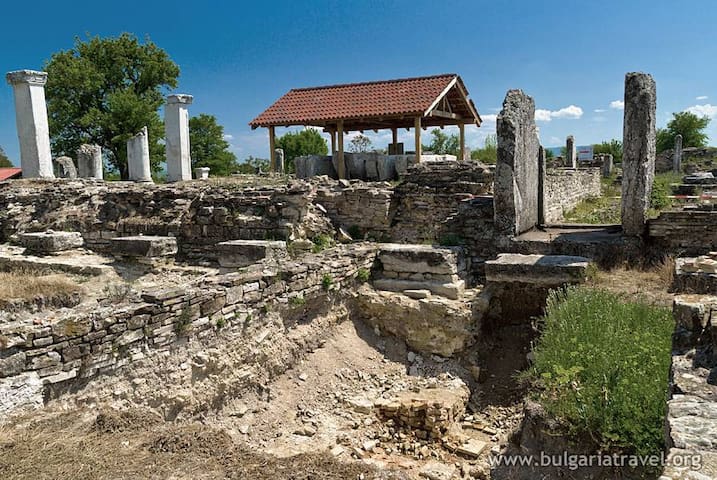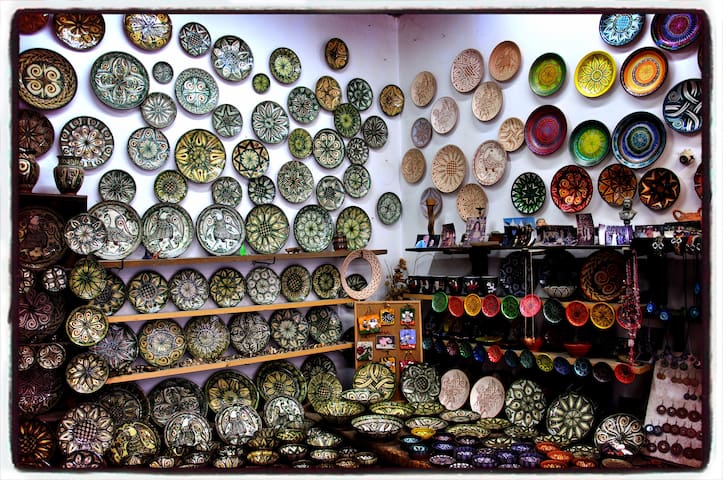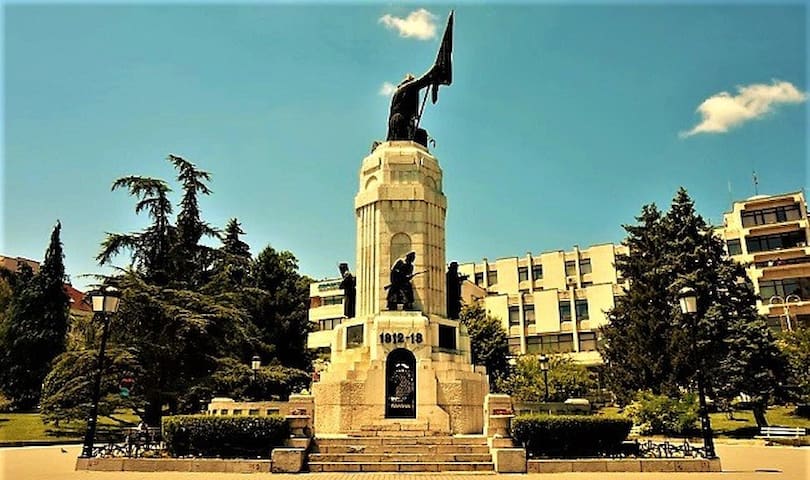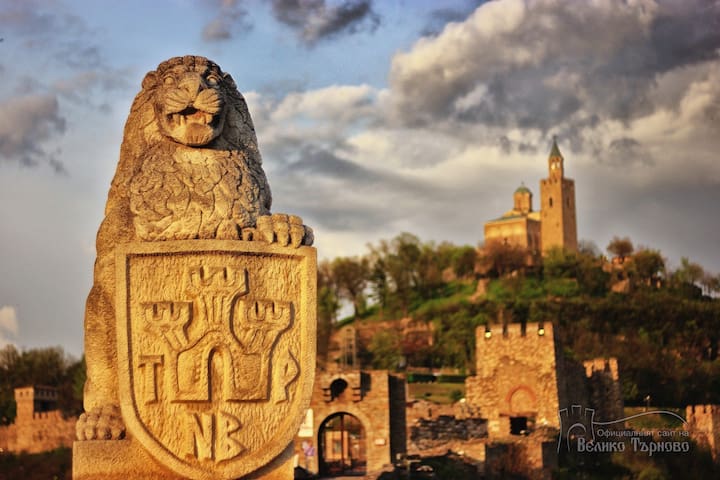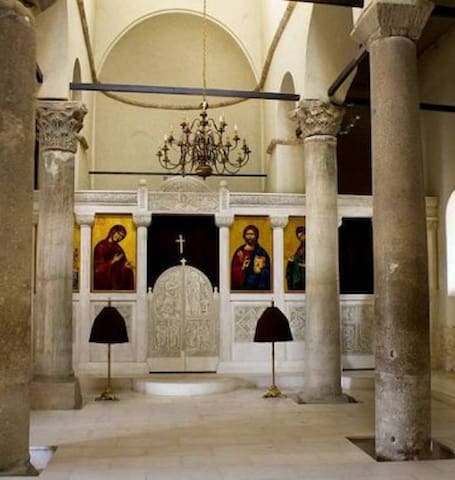Neighborhoods
Nicopolis ad Istrum was a Roman and an Early Byzantine town. It was founded by the Roman emperor Marcus Ulpius Traianus to honor his victories over the Dacians tribes in 101 and 106. The ruins are located at the village of Nikyup, 20 km north-west of Veliko Tarnovo. The town was extended on a plateau on the left bank of the river of Yantra.
It is not by chance that Nicopolis was erected at that place. The main reason was the strategic location. The two main roads of the Danubian Roman provinces crossed there. One of them started from Odessus (Varna) and connected with the road leading to the western Roman provinces. The other road was the link between the Danubian fort Novae and the Roman provinces in Asia Minor.
Initially the town belonged to the province of Trace. In the beginning of 193 Nicopolis was included in the province of Lower Moesia. Its urban area expanded after the reforms of Emperor Diocletian (284-305). Many villas, market places, settlements were built in the surroundings.
The organization of the town shows a similarity to the towns in Trace and Asia Minor – Ephesus, Smyrna, Pergamon. The Council of archons, headed by the first archon, who had a legal power, governed the town. The rest archons took care for the finances, economics, supplying with provisions and public order. The Town council and the National Assembly were very important institutions of the local authority. A community of priests worshiped the cult to the emperor, Roman and Greek divinities: Zeus, Hera, Athena, Asclepius, Dionysus, Mithras.
People of various ethnical groups lived in Nicopolis: settlers from Asia Minor, Thracians and Roman veterans. The Greek was the official language.
8 lokal ang nagrerekomenda
Nicopolis ad Istrum
Nicopolis ad Istrum was a Roman and an Early Byzantine town. It was founded by the Roman emperor Marcus Ulpius Traianus to honor his victories over the Dacians tribes in 101 and 106. The ruins are located at the village of Nikyup, 20 km north-west of Veliko Tarnovo. The town was extended on a plateau on the left bank of the river of Yantra.
It is not by chance that Nicopolis was erected at that place. The main reason was the strategic location. The two main roads of the Danubian Roman provinces crossed there. One of them started from Odessus (Varna) and connected with the road leading to the western Roman provinces. The other road was the link between the Danubian fort Novae and the Roman provinces in Asia Minor.
Initially the town belonged to the province of Trace. In the beginning of 193 Nicopolis was included in the province of Lower Moesia. Its urban area expanded after the reforms of Emperor Diocletian (284-305). Many villas, market places, settlements were built in the surroundings.
The organization of the town shows a similarity to the towns in Trace and Asia Minor – Ephesus, Smyrna, Pergamon. The Council of archons, headed by the first archon, who had a legal power, governed the town. The rest archons took care for the finances, economics, supplying with provisions and public order. The Town council and the National Assembly were very important institutions of the local authority. A community of priests worshiped the cult to the emperor, Roman and Greek divinities: Zeus, Hera, Athena, Asclepius, Dionysus, Mithras.
People of various ethnical groups lived in Nicopolis: settlers from Asia Minor, Thracians and Roman veterans. The Greek was the official language.
Sightseeing
Samovodska Charshia (market) square is where the people of nearby Samovodene village came to sell their home-grown produce in the second half of the 19th century. The marketplace flourished and spread down the quaint and cobbled Rakovski street, encompassing various inns (Hadji Nikoli's inn, built 1858, is still there today), bakeries and pastry shops and traditional craft workshops. The whole area underwent serious restoration in the mid 1980s to recreate the bustling marketplace of the early 20th century. In among the beautifully renovated houses from the pre- and post-liberation period the visitor can find workshops for pottery, weapons, copper working, wood carving, weaving, icon painting, Turkish sweets and a bakery.
Complex ng Samovodska Charshiya
16 ul. "Georgi S. Rakovski"Samovodska Charshia (market) square is where the people of nearby Samovodene village came to sell their home-grown produce in the second half of the 19th century. The marketplace flourished and spread down the quaint and cobbled Rakovski street, encompassing various inns (Hadji Nikoli's inn, built 1858, is still there today), bakeries and pastry shops and traditional craft workshops. The whole area underwent serious restoration in the mid 1980s to recreate the bustling marketplace of the early 20th century. In among the beautifully renovated houses from the pre- and post-liberation period the visitor can find workshops for pottery, weapons, copper working, wood carving, weaving, icon painting, Turkish sweets and a bakery.
The new green heart of Veliko Tarnovo – “Saint forest” park started to beat. Hundreds of children are coming with their parents to take a walk or have some fun at the newest and biggest park in the old capital. The minister of regional development and public works Lilyana Pavlova and the mayor of Veliko Tarnovo Daniel Panov officially opened the renovated park on the 21st of September, 2016.
Over 6 km of pedestrian and cycle alleys, kinder playgrounds, pet-park, sports playground, climbing wall, outdoors fitness equipment, panoramic terrace, skateboard platform and more attractions were built on 537 decares at the hill Saint forest to form this fantastic park. 1,9 million levs were invested for this new park from the Operative programme “Regional development”, the executor is “HIT” company.
7 lokal ang nagrerekomenda
Sveta gora
The new green heart of Veliko Tarnovo – “Saint forest” park started to beat. Hundreds of children are coming with their parents to take a walk or have some fun at the newest and biggest park in the old capital. The minister of regional development and public works Lilyana Pavlova and the mayor of Veliko Tarnovo Daniel Panov officially opened the renovated park on the 21st of September, 2016.
Over 6 km of pedestrian and cycle alleys, kinder playgrounds, pet-park, sports playground, climbing wall, outdoors fitness equipment, panoramic terrace, skateboard platform and more attractions were built on 537 decares at the hill Saint forest to form this fantastic park. 1,9 million levs were invested for this new park from the Operative programme “Regional development”, the executor is “HIT” company.
The monument of "Mother Bulgaria" is one of the most emblematic places in the city of Veliko Tarnovo. It is located between two of the major streets in the central part - "Independence" str. and "Vasil Levski" str.
The monument is dedicated to the Bulgarians killed in the Russo-Turkish, the Serb-Bulgarian, the Balkan and the First World Wars. It represents a statue of a woman on a large pedestal. The woman is "Mother Bulgaria" and is kneeling in memory and appreciation of the dead Bulgarians. At different sides of the pedestal there are statues of Bulgarian soldiers from the different wars.
Around the monument there is a small, but well maintained garden with benches. Nearby is the building of the Municipal Council and often there is the first place where the newlyweds take a photos after wedding.
Monumento ng Inang Bulgaria
1А ul. "Tsar Teodor Svetoslav"The monument of "Mother Bulgaria" is one of the most emblematic places in the city of Veliko Tarnovo. It is located between two of the major streets in the central part - "Independence" str. and "Vasil Levski" str.
The monument is dedicated to the Bulgarians killed in the Russo-Turkish, the Serb-Bulgarian, the Balkan and the First World Wars. It represents a statue of a woman on a large pedestal. The woman is "Mother Bulgaria" and is kneeling in memory and appreciation of the dead Bulgarians. At different sides of the pedestal there are statues of Bulgarian soldiers from the different wars.
Around the monument there is a small, but well maintained garden with benches. Nearby is the building of the Municipal Council and often there is the first place where the newlyweds take a photos after wedding.
For more than two centuries Tarnovo is the capital of the Second Bulgarian Kingdom (the end of XII – XIV century.). It is the center, where were decided the most important political, religious, administrative and cultural issues in the life of the mediaeval state. Contemporaries spare the epithets calling it “Bogospasniy Tarnovgrad” “Great Tarnov”, “Queen of the Cities” “… second in words and deeds after Istanbul,” its fame wore in distant lands, reaching to the “North Ocean”.
The territory of the city Tarnovo that has been inhabited since ancient times became a metropolitan center after the restoration of the Bulgarian state in 1186. It is chosen because of its strategic location, the vast area for development and the fact that at the end of XII century it is one of most fortified cities. This provides good opportunities for its development as large and populous urban center. The capital city extends over the fortified with powerful walls hills Tsarevets, Trapezitsa, Momina fortress slopes to the natural water barrier of Yantra river and its terraces.
The dominance of Tsarevets Hill and its natural inaccessibility have determined the choice here to be the center of supreme control of the state. A complex defense system is ensuring the safety of people living in the castle. The main entrance to the interior is from the west. It is protected by four consecutive gates and towers over them. There was a drawbridge before the first gate. Close to the inner gate are the barrack-rooms.
A dominant place in the palace and fortress occupied the royal complex and the patriarchal complex. In the palace of Bulgarian kings live the mediaeval rulers and their associates, who draw up and implement the overall policy of the state. It is the most impressive and monumental ensemble in the capital, with area of 2872 square meters. During XII – XIV century it underwent several renovations. It is protected on all sides by a massive fortress wall and towers. There are buildings with ornate facades inside. The throne-room and the private chambers of the ruler have magnificent interior. The king’s administration offices and a number of buildings with food, hygienic and economic purposes were in the palace. The relics of the revered Bulgarian saint – St. Petka were in the royal church. Some of the Bulgarian kings ruled in the XIV century are buried in this temple.
The administration of the church life is realized from the Patriarchy – the “mother of all Bulgarian churches”. Surrounded by fortified walls and towers the patriarchal complex occupies an area of 2413 square meters. There were the library, the scriptorium, the dwellings and offices of the patriarch and the monks’ cells. The Patriarchal Church “Ascension of Christ” with a bell tower is located in the middle of the courtyard. It also kept the relics of St. Michael Voin and some canonized saints – Bulgarian Patriarchs Joachim I, and Joachim Macarius III.
The rest of the fortress was built tightly. Archaeological excavations have uncovered the foundations of 470 residential buildings, architectural complex inhabited by senior Bulgarian aristocrat, an inn. During the metropolitan period in the castle there were 23 temples and 4 city monasteries. Their facades have been implemented in the typical for the period picturesque style and inside they were covered with magnificent frescoes. Nowadays can be seen fully restored patriarchal church “Ascension of Christ”. The frescoes inside it are the work of the artist Theophanes Sokerov. There are presented in large-scale compositions personalities and the most important moments of medieval history.
46 lokal ang nagrerekomenda
Kuta ng Tsarevets
Square Tsar AsenFor more than two centuries Tarnovo is the capital of the Second Bulgarian Kingdom (the end of XII – XIV century.). It is the center, where were decided the most important political, religious, administrative and cultural issues in the life of the mediaeval state. Contemporaries spare the epithets calling it “Bogospasniy Tarnovgrad” “Great Tarnov”, “Queen of the Cities” “… second in words and deeds after Istanbul,” its fame wore in distant lands, reaching to the “North Ocean”.
The territory of the city Tarnovo that has been inhabited since ancient times became a metropolitan center after the restoration of the Bulgarian state in 1186. It is chosen because of its strategic location, the vast area for development and the fact that at the end of XII century it is one of most fortified cities. This provides good opportunities for its development as large and populous urban center. The capital city extends over the fortified with powerful walls hills Tsarevets, Trapezitsa, Momina fortress slopes to the natural water barrier of Yantra river and its terraces.
The dominance of Tsarevets Hill and its natural inaccessibility have determined the choice here to be the center of supreme control of the state. A complex defense system is ensuring the safety of people living in the castle. The main entrance to the interior is from the west. It is protected by four consecutive gates and towers over them. There was a drawbridge before the first gate. Close to the inner gate are the barrack-rooms.
A dominant place in the palace and fortress occupied the royal complex and the patriarchal complex. In the palace of Bulgarian kings live the mediaeval rulers and their associates, who draw up and implement the overall policy of the state. It is the most impressive and monumental ensemble in the capital, with area of 2872 square meters. During XII – XIV century it underwent several renovations. It is protected on all sides by a massive fortress wall and towers. There are buildings with ornate facades inside. The throne-room and the private chambers of the ruler have magnificent interior. The king’s administration offices and a number of buildings with food, hygienic and economic purposes were in the palace. The relics of the revered Bulgarian saint – St. Petka were in the royal church. Some of the Bulgarian kings ruled in the XIV century are buried in this temple.
The administration of the church life is realized from the Patriarchy – the “mother of all Bulgarian churches”. Surrounded by fortified walls and towers the patriarchal complex occupies an area of 2413 square meters. There were the library, the scriptorium, the dwellings and offices of the patriarch and the monks’ cells. The Patriarchal Church “Ascension of Christ” with a bell tower is located in the middle of the courtyard. It also kept the relics of St. Michael Voin and some canonized saints – Bulgarian Patriarchs Joachim I, and Joachim Macarius III.
The rest of the fortress was built tightly. Archaeological excavations have uncovered the foundations of 470 residential buildings, architectural complex inhabited by senior Bulgarian aristocrat, an inn. During the metropolitan period in the castle there were 23 temples and 4 city monasteries. Their facades have been implemented in the typical for the period picturesque style and inside they were covered with magnificent frescoes. Nowadays can be seen fully restored patriarchal church “Ascension of Christ”. The frescoes inside it are the work of the artist Theophanes Sokerov. There are presented in large-scale compositions personalities and the most important moments of medieval history.
The Holy Forty Martyr’s church was built and decorated with murals by the will of the Bulgarian tzar Ivan Asen II, to commemorate his victory over the king of the Epirus kingdom Theodor Comnenus in 1230. In the middle of the XIII century, around the church was erected the royal monastery of the Great Laurel. The church became a centre of a series of important events and its nave comprises the most significant tokens of the Bulgarian history – the coloumns of khan Omurtag (815 – 831), of khan Krum (803-814) and of Ivan Asen II with inscriptions on them. During archeological researches were unearthed the tombs of significant medieval persons. The biggest interest drew the grave the Bulgarian king Kaloyan, who was assassinated during the siege of Thessaloniki in 1207. After his death his body was solemnly carried to capital, where he was buried with honours. In the church were also the graves of one of the greatest Bulgaria’s rulers – Ivan Asen II and his wife Anna – Maria. The church was the place where the relics of St. Sava of Serbia and St. Ilarion of Muglen were kept. Consequently the body of St. Sava was transferred to Serbia but his grave is still an attractive point for pilgrims. One of the most important events held in the church was the pronouncing of the Bulgarian independence on the 22 nd of September, 1908.
9 lokal ang nagrerekomenda
Holy Forty Martyrs Church
22 ул. „Свети Климент Охридски“The Holy Forty Martyr’s church was built and decorated with murals by the will of the Bulgarian tzar Ivan Asen II, to commemorate his victory over the king of the Epirus kingdom Theodor Comnenus in 1230. In the middle of the XIII century, around the church was erected the royal monastery of the Great Laurel. The church became a centre of a series of important events and its nave comprises the most significant tokens of the Bulgarian history – the coloumns of khan Omurtag (815 – 831), of khan Krum (803-814) and of Ivan Asen II with inscriptions on them. During archeological researches were unearthed the tombs of significant medieval persons. The biggest interest drew the grave the Bulgarian king Kaloyan, who was assassinated during the siege of Thessaloniki in 1207. After his death his body was solemnly carried to capital, where he was buried with honours. In the church were also the graves of one of the greatest Bulgaria’s rulers – Ivan Asen II and his wife Anna – Maria. The church was the place where the relics of St. Sava of Serbia and St. Ilarion of Muglen were kept. Consequently the body of St. Sava was transferred to Serbia but his grave is still an attractive point for pilgrims. One of the most important events held in the church was the pronouncing of the Bulgarian independence on the 22 nd of September, 1908.
Multimedia visitor centre “Tsarevgrad Tarnov” is located near Tsarevets hill. Notable sculptures and paintings present historical figures and events of the Second Bulgarian Kingdom. It recreates lives of different social layer in medieval bulgarian society – monarchs, clergy, boyars and warriors, craftsmen.
Visitors will experience the rich history of Tsarevgrad as a symbol of royalty, glory and spiritual power.
Мултимедиен посетителски център "Царевград Търнов" /Музей на восъчните фигури/
6 ul. "Nikola Pikolo"Multimedia visitor centre “Tsarevgrad Tarnov” is located near Tsarevets hill. Notable sculptures and paintings present historical figures and events of the Second Bulgarian Kingdom. It recreates lives of different social layer in medieval bulgarian society – monarchs, clergy, boyars and warriors, craftsmen.
Visitors will experience the rich history of Tsarevgrad as a symbol of royalty, glory and spiritual power.

